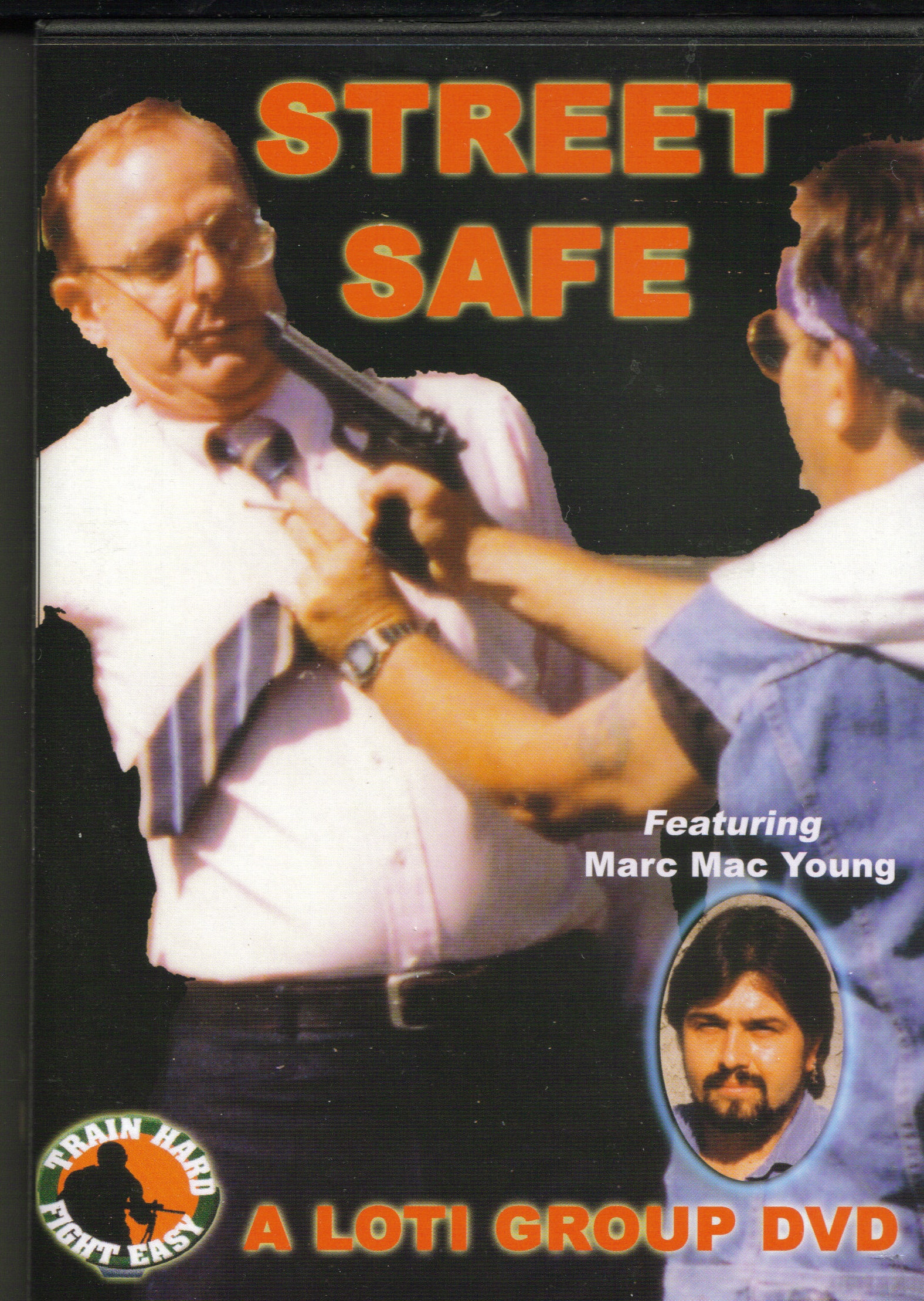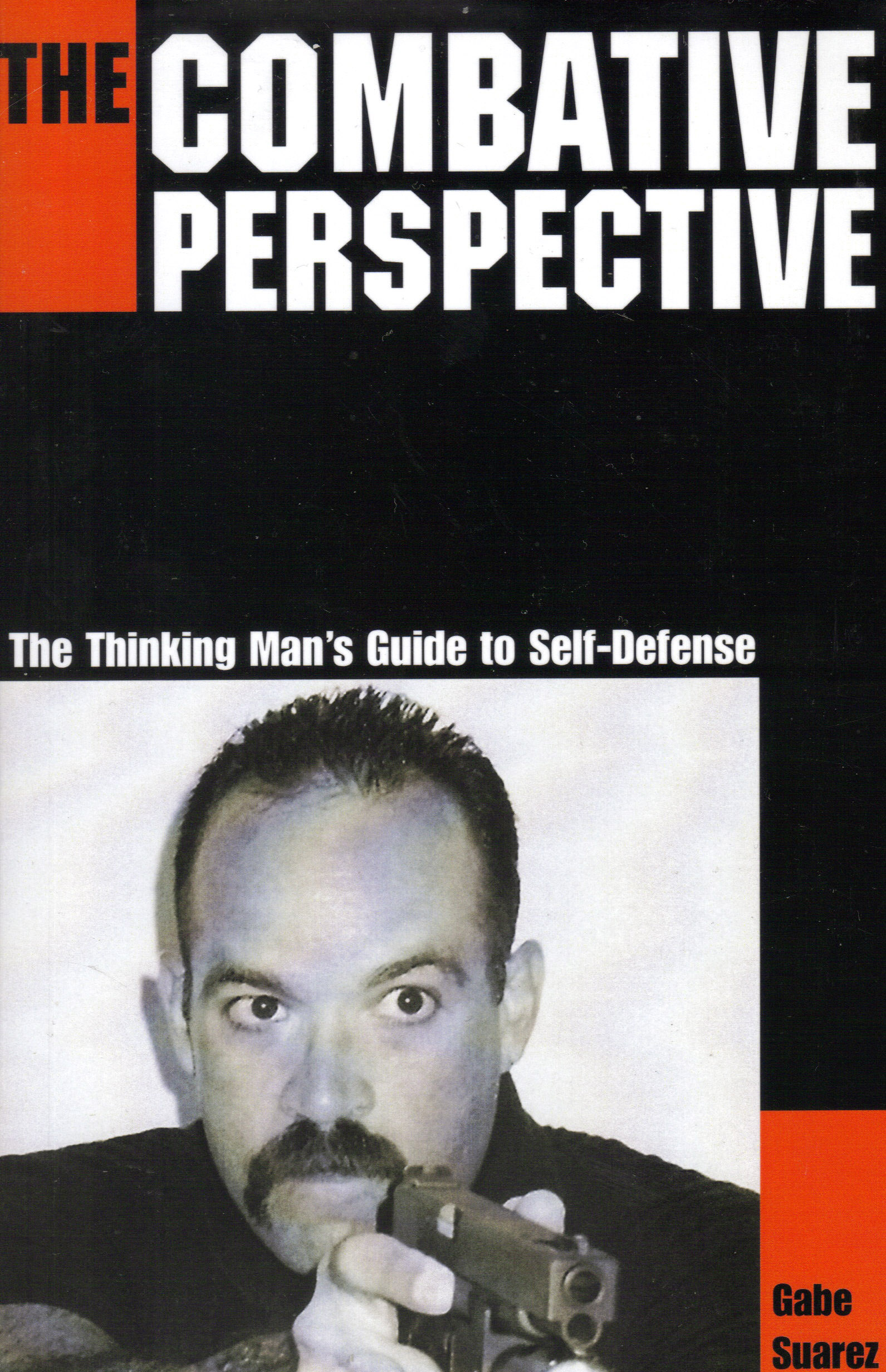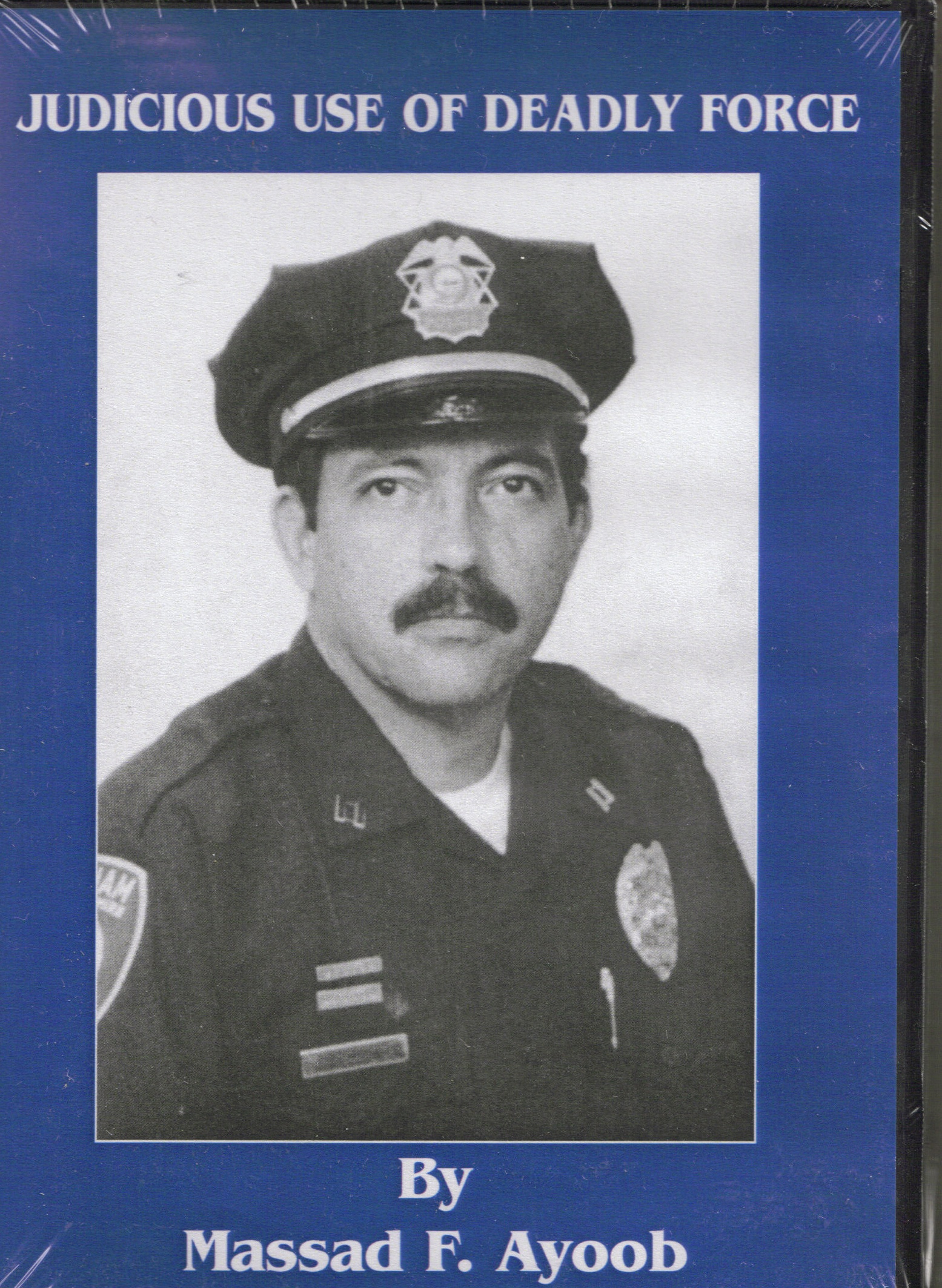Marc MacYoung?
Dianna Gordon MacYoung?
Animal E-list
Crime Avoidance Lectures
Crime Blog
Colorado Classes
Contact Us
FAQs
Hosting A Seminar
Crime Prevention
Expert Witness
Knife Defense
Law Enforcement
Martial Arts
Military
Movie Consulting
Women's Self-Defense
Links
Our Linking Policy
On-line Store
Train with MacYoung
Testimonials
Terms of Use
Topics
of Interest
We should manage our fortune as we do our health
- enjoy it when good, be patient when it is bad,
and never apply violent remedies except
in an extreme necessity.
François de la Rochefoucauld
Why Self Defense Isn't Cut and Dried
On this page:
Crime and Violence |
Variable problems require variable solutions |
Train For What Happens Most ...
Before you read this, we strongly recommend you get a cup of coffee and go over to the Self-Defense Explained page. That will give you a fundamental understanding of the issues we'll be talking about on this page.
Here's the problem that you face not only with
self-defense, but with any kind of martial
art/self-defense training:
The EXACT same punch can be
1) self-defense
2) fighting or
3) an assault
depending on WHEN you throw it and under what circumstances.
A lot of people want to know what martial art style is best for self-defense. Then the look at us like we're retards because we tell them it isn't that simple. But let's take the idea of 'what style' to a more basic level. One that's based on what we said above:
It's NOT the punch or kick that matters. It's WHEN and WHY you throw it.
The same thing applies to 'what style?' The exact same set of movements can be self-defense, a fight or an assault. It all depends on how you use them and in what circumstances.
Where things begin to get complicated:
This is why so many people run into major problems when it comes to defending themselves. They either undershoot or over shoot the mark. That is to say what they are doing in a particular situation is either too little or too much.
Know this now, a huge component in successful self-defense is understanding and reacting appropriately to external, identifiable and known standards.
We often tell people "The situation dictates." We use this to mean that you must make decisions based on the circumstances that are occurring and at that moment. Now you may have noticed that last sentence was rather grammatically clunky. While clumsy, it conveys important concepts. First is a situation can -- and does -- change from second to second, with the danger level rising and falling as circumstances develop. Therefore you must be in a constant decision making process. A process that adjusts your reactions accordingly.
While this may seem like a daunting task, it is not as difficult as you might think. IF, that is, you switch to a different paradigm.
Before we get to that though, let's look at where most people currently fall apart when it comes to self-defense. All the possibilities will seem overwhelming if you are operating on internal, subjective interpretation. That is when your emotions, mental state and lizard brain are running things. People in this condition are not 'seeing' anything than their own interpretation of events. They not only don't have choices, but if something occurs outside those expectations, they are at a loss about what to do (this is the over or under-reaction we mentioned).
On the other hand, if you have an established, external scale to compare it against, any situation -- no matter how new or different -- will fit somewhere within that scale. While you may not have encountered those exact circumstances, you can quickly assess they warrant a certain level of response.
Comparing a situation to external and established standards is what professionals do all the time. They are assessing the threat, not based on what they are feeling at the moment, but known dangers. They then tailor their actions accordingly.
Crime and Violence
In this Webpage you will often come across the term
'crime and violence.' It might seem that we've repeated
ourselves, but we haven't. Crime and violence, while
closely linked,
aren't synonymous.
That is to say a violent act, while usually illegal, isn't necessarily criminal in intent. A criminal act (complete with intent) isn't necessarily violent. At the same time, if it is, it is designed to be overwhelming. We tell you this because the intent -- and degree -- of a violent act determine what will be coming at you. Those variables determine what you must do to defend against it. Sometimes it's not that bad, sometimes it is.
The challenge is to know the difference. Not knowing or guessing wrong will either get you hurt or thrown in prison. This is not hyperbole, both crime and violence are dangerous and have permanent consequences.
Understanding this basic distinction between crime and violence starts to erode the common misconception that self-defense is a simplistic, if not homogenized, subject. Violence is a far more complex continuum than many people think. While it can be as minor as a single strike to stop unacceptable behavior, it can be much worse. When violence is mixed in with criminal goals and personalities it can escalate to to extreme levels in a very short time.
Another reason to distinguish between crime and violence is most violence is interpersonal in nature. By this we mean it isn't a stranger walking up, pulling a gun and demanding your money. An overwhelming majority of violence occurs between people who know each other. While it is possible that a complete stranger will attempt to pick a fight with you, most violence occurs between people who have some degree of familiarity with one another. That is to say they get into some kind of disagreement or argument and it escalates into physical violence. In other words, it's a fight.
This puts a whole new complicating factor on the subject of 'self-defense' because while self-defense is legal, fighting is illegal. Realize that although you may view it as 'self-defense,' an argument that escalates into physical violence is investigated as 'participatory combat.' That means what you said and did before the violence occurred will weigh heavily whether what you did is deemed self-defense or fighting.
Remember, interpersonal violence is the majority of the violence that occurs. Whether you think it was warranted or not, most violence is a verbal and emotional conflict that escalates to the physical.
Variable problems require variable
solutions
We often have to tell people who have invested large
amount of time training in the martial arts -- especially the mixed
martial arts -- that: Strategies, that will win a bar fight for
you, will get your head blown off against a criminal.
We have to say that because many people who have taken some kind of training -- that they feel is effective for self-defense -- fail to realize exactly how complicated and variable crime and violence is. Not to denigrate their training, but if crime and violence are this complicated, what makes them think self-defense is a 'you just do this' issue?
There is no one-size-fits-all approach to self-defense. The same applies to violence.
That is to say sometimes a situation can be resolved by a mere glance while other situations will require you to blow a hole in someone's chest with a shotgun. And if you want to stay alive, you had better not hesitate in the latter. The spectrum of self-defense covers those two extremes and everything in between.
Another complication is what we call "The Drunken Uncle Albert" factor. Not all of the violence you can be drawn into will be self-defense. We often confront people who have taken combative or deadly martial arts training with the problem of "What are you going to do with Drunken Uncle Albert at a family reunion? You can't use that training on him. As much as you may want to, you can't break him in half."
Situations like this require strategies that are neither self-defense or fighting. They require a third strategy, that of control and restraint (which is the same thing police do). If you don't have a Drunken Uncle Albert in your family, how about an out-of-control teen? If not one of yours, one of their friends.
This is why we say "you just do this" answers are ineffective.
Whether that 'just' answer is to take martial arts, carry a gun, learn some kind of commando street-fighting combative system, train in the mixed martial arts or carry pepper spray, such answers ignore the realities and the complexities of the problem.
Although such answers are often convenient -- and truth be told emotionally satisfying -- they are, in fact, extremely dangerous. While they seem great in theory, in practice they pose a danger to either to you, or to someone else (against whom such brutality is not warranted).
Train For What Happens Most
...
And you will be able to handle most of what happens.
We constantly use that saying to reassure people that self-defense is a manageable problem. If you aren't hanging out in biker bars you don't need to be a trained street-fighter in order to defend yourself. If, on the other hand, your job requires you to travel into bad neighborhoods at all hours, then the threat that you will be facing will require something more effective than empty-handed techniques. But with that also comes the responsibility of knowing when using that level of force is appropriate. People in these circumstances do need to research the subject in much greater depth in order to be prepared to handle the complexities.
But for the average person -- who doesn't live a high risk lifestyle; who doesn't have criminal or dangerous friends, who doesn't hang out in bars; whose job doesn't put them into dangerous environments; who doesn't have a Drunken Uncle Albert or a teenager involved high risk behavior -- your best defense is awareness and avoidance. In other words, robbery isn't likely to happen, but with a few basic precautions and good habits you can reduce the chances of being attacked to almost nil.



Street Safe: How to
Recognize and Avoid Violent Crime
Learn More >
Order Now!

Escape Combatives
Special Bonus Feature
ESCAPE DRIVING
Learn More >
Order Now!

Psycho-Physiological Effects of
Violent Encounters
Learn More >
Order Now!

The Bulletproof Mind
Learn More >
Order Now!

The Combat Perspective: A
Thinking Man's Guide to Self-Defense
Learn More >
Order Now!

Judicious Use of Deadly Force
Learn More >
Order Now!

Minimum Damage, Maximum Effect
Learn More >
Order Now!

In the Gravest Extreme
Learn More >
Order Now!

The Missing Link:
Self-Protection Through Awareness, Avoidance and
De-Escalation
Learn More >
Order Now!

Hand to Hand Combat for Police
Officers
Learn More >
Order Now!
Defeating The Victim's Consciousness
| About navigating this site | Animal List | Bibliography | Bullies | Burglary while on vacation | Classes in Colorado | Car Jacking | Children and Martial Arts | Child Safety | Criminal Mindset | Cults in MA/SD | De-Escalation | E-mail Dianna | E-mail Marc| FAQs | Have MacYoung speak about crime avoidance | Home Page | Home Defense | Hosting a Seminar | Fear | Five Stages of Crime | Knife Fighting | Legal Issues | LEO/Correctional Officer/EMS | Linking policy | Links | Martial Arts | Photo Gallery | Property Crime | Psychology | Rape | Robbery | Safe Dating | Self-Defense Training | Selling your books/DVDs on NNSD | Seminar Schedule | Stalking/Domestic Violence | Street Fighting | Terms of Use | Testimonials | Train with Marc MacYoung | Who is Dianna Gordon MacYoung? | Who is Marc "Animal" MacYoung? | Victimhood | Workplace Problems | Zero Tolerance | ||
| 1998-2008 No Nonsense Self-Defense, LLC. All rights reserved. |